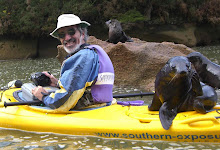So I can finally add well enough to move on beyond exercise 13 in "How to Calculate Quickly." I keep asking myself, "Why can't I add the numbers right every time. They're just two digit numbers and it's just addition."
So, this morning, for the 25 columns, I made myself slow down and I allowed myself to re-do a problem if I wasn't confident that it was right. A couple of times I got four different answers. I can't be that dumb or careless. But I was. So if I got the same answer twice, or in a couple of instances, three times, I went with it. Even with all that, I still got two wrong, but that gave me 92 percent and personal permission to move on.
The next exercise was to add 19 to randomly arranged numbers 1 through 99. I sailed through that. Next up, exercise 15, more two-digit addition with longer columns. Way longer. I'll report later.
I put my book purchase decision off for a little bit. I decided to email the professor to verify the name of the book and ask whether an earlier edition might work.
The instructor is listed as Gerald J. Lapeyre. I couldn't find a bio on the Pima College Web site. On Google, I found a retired physics professor from Montana State. Looking deeper I found some minutes from a Montana Board of Regents of Higher Education meeting from September 21-22, 2000/ One entry said:
"Authorization to Confer the Title of Professor Emeritus of Physics upon Gerald J. Lapeyre; Montana State University- Bozeman." Cool. An old guy. Like me.
Turns out that Professor Lapeyre also has authored several physics research papers.
I was curious about his academic interests and found this on the Montana State Web site:
"Professor Lapeyre's research in the solid state and surface science laboratory focuses on the electronic states and electron interactions in solids and at surfaces. A strong emphasis is placed on quantum properties of MBE grown III-V semiconductor surfaces. The principal spectroscopies used are polarization dependent angle-resolved photoemission spectroscopy (PARUPS) in the far and extreme ultraviolet spectral range and high resolution low energy electron loss spectroscopy (HREELS). LEED, ESCA, and Auger are used for multiple sample analysis. Two sources of photon flux are available. In the Montana State University laboratory, gas discharge lamps and x-rays are used. The MSU lab group is also a user group at the Synchrotron Radiation Center at the University of Wisconsin, where the group has its own beam line which covers the spectral range from about 5 to 1000 eV."
I didn't understand a word of that either.
I wonder if my teacher will be his son? Or by amazing coincidence, another human named Gerald J. Lapeyre. Or, did professor Lapeyre retire to Tucson and decide to teach a community college algebra class just to keep busy.
I sorta hope it is him. I've been wanting to engage in a discussion with a physicist about the big bang, that they all believe it. My question is basically: Is there a word for the circumstance where all assumptions are apparently correct and all the math is done correctly but the entire process proves a phenomenon that is absurd on its face? Like the big bang theory.
Friday, August 15, 2008
Subscribe to:
Post Comments (Atom)

No comments:
Post a Comment